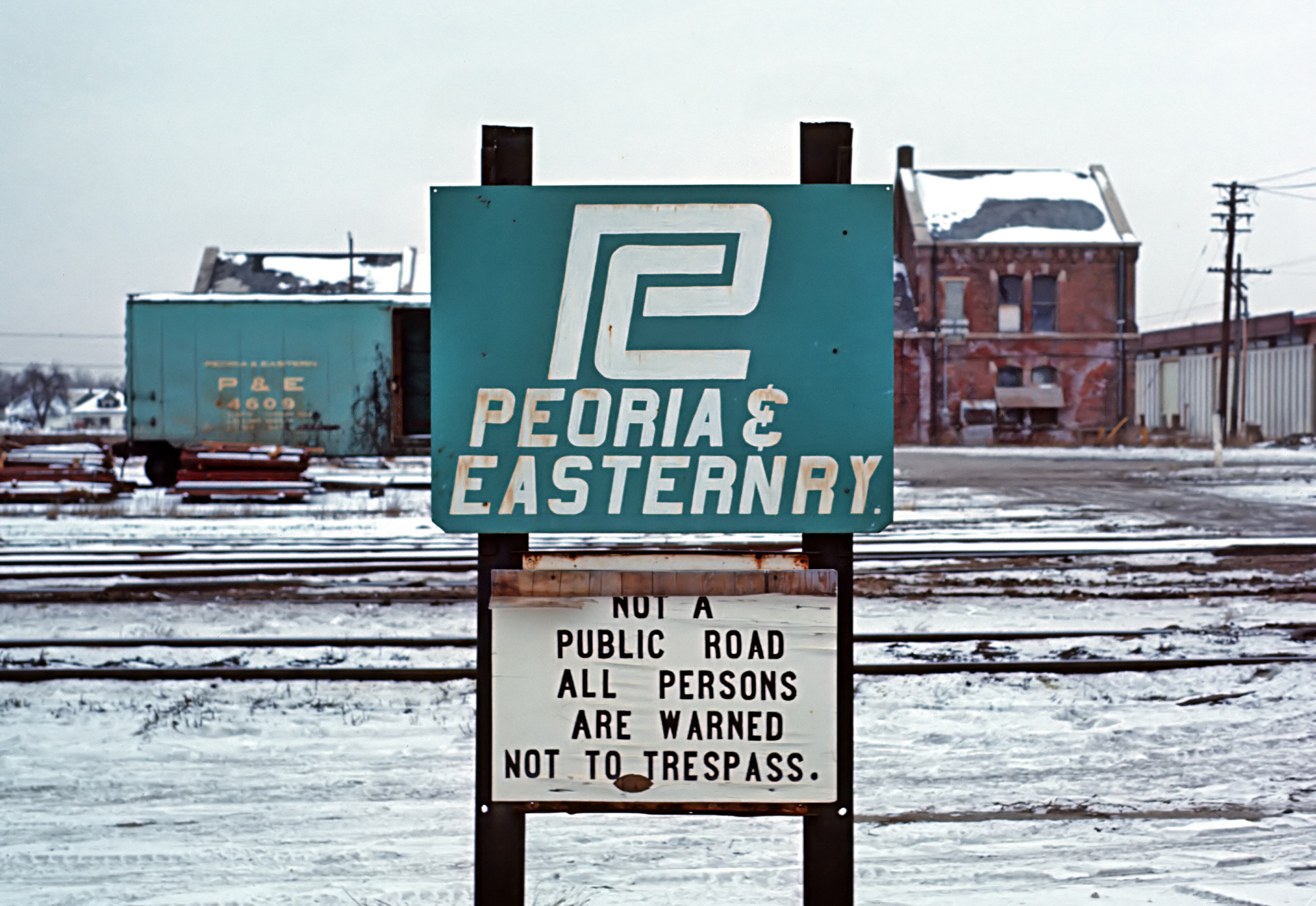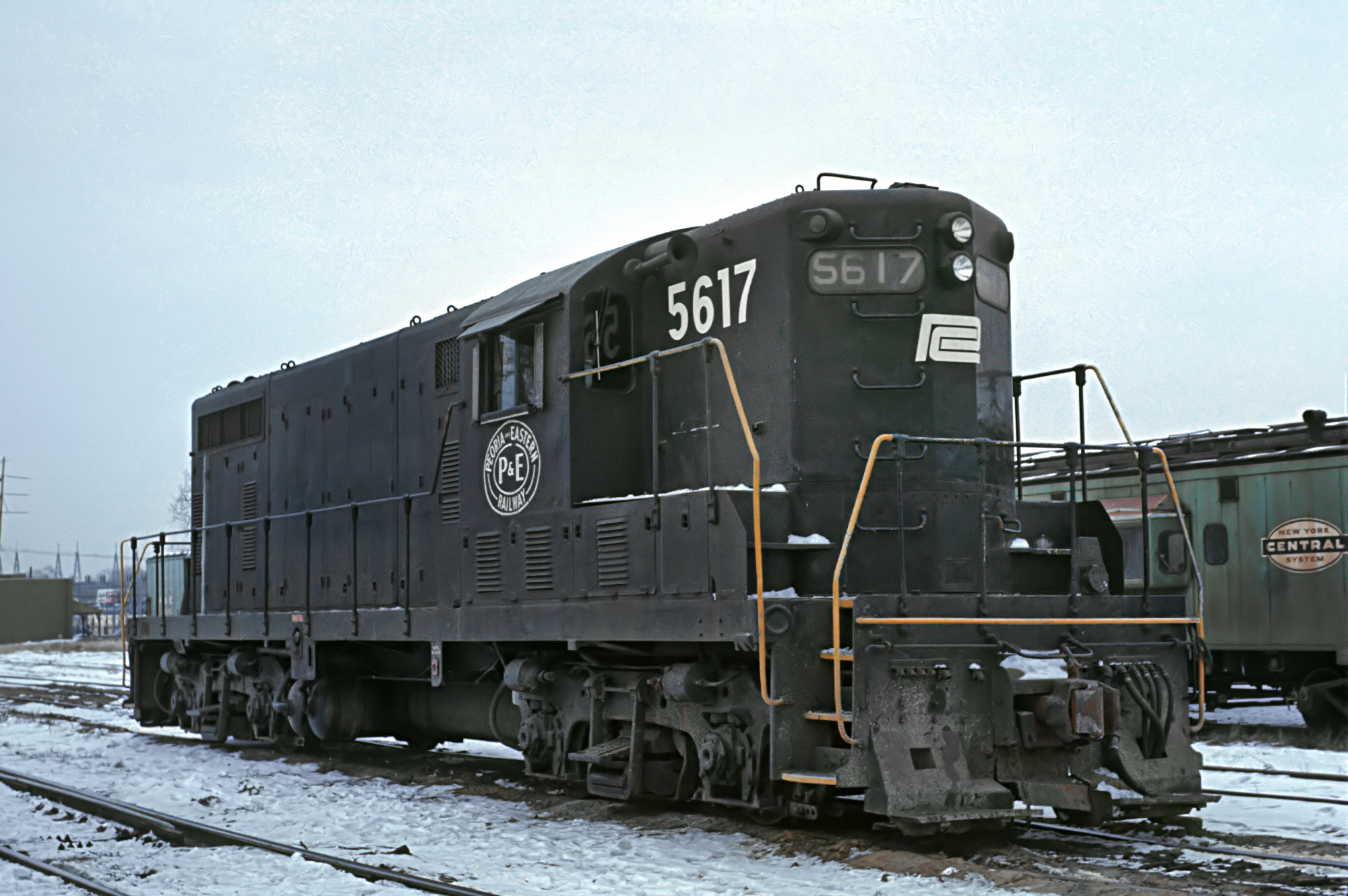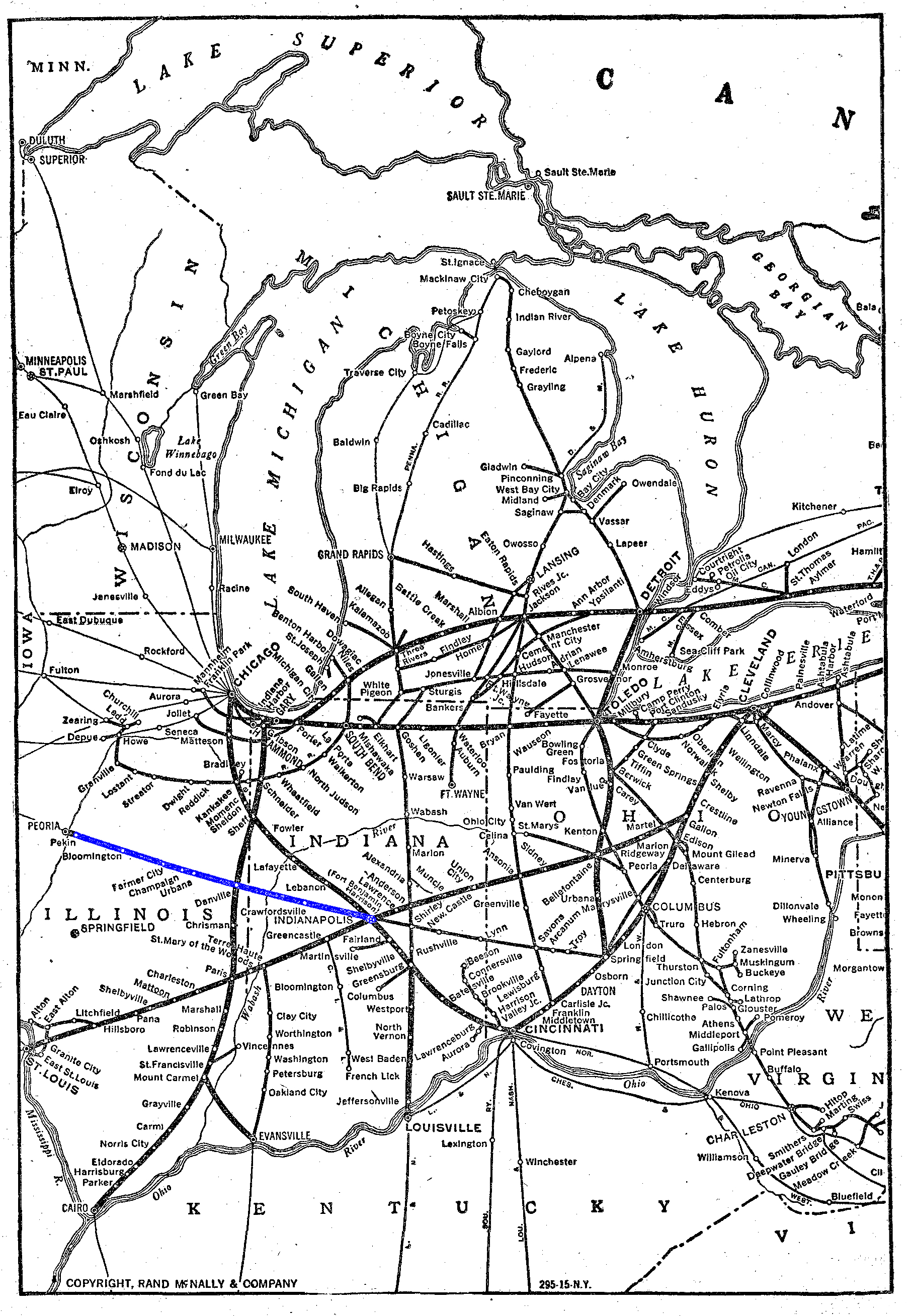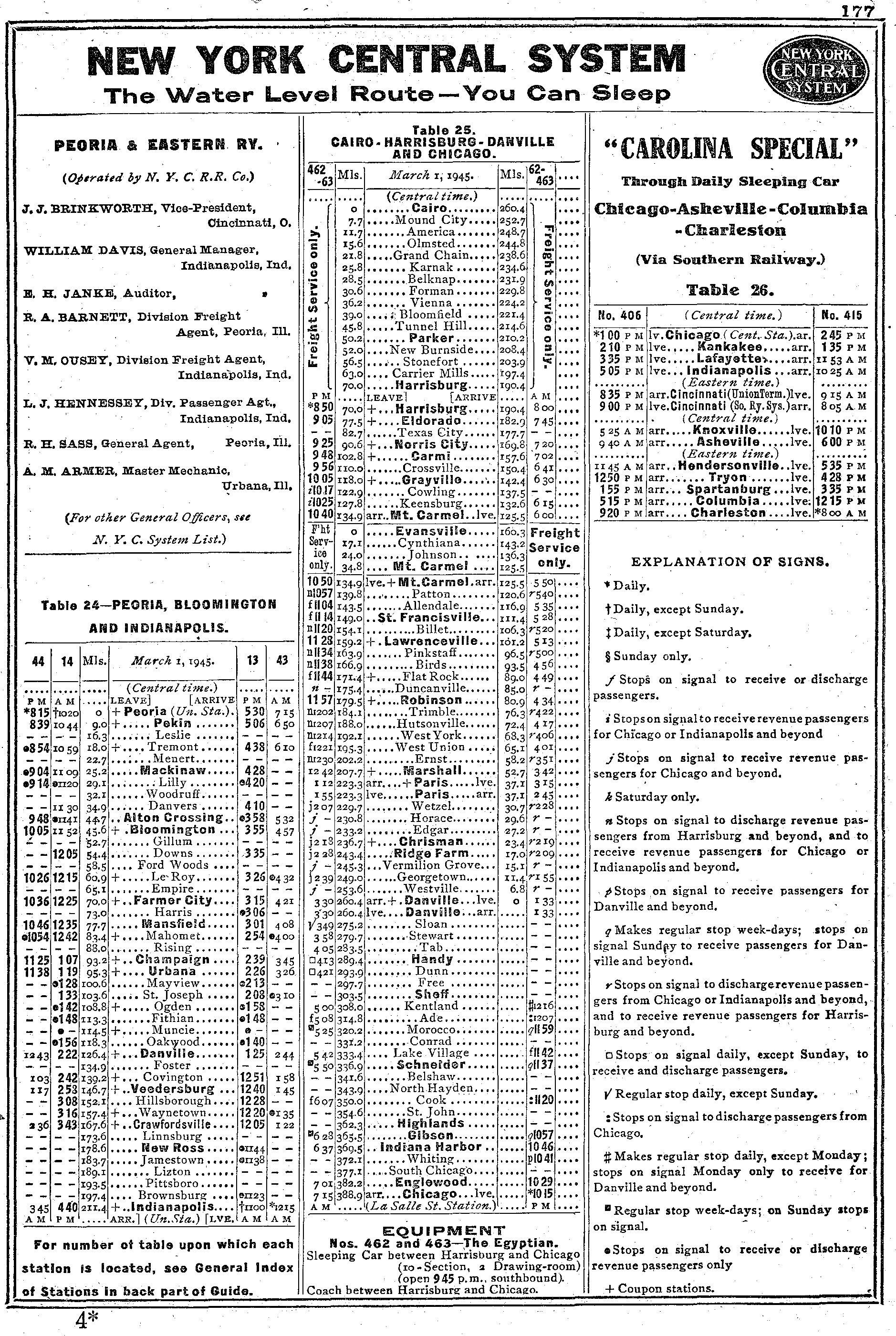Peoria and Eastern Railway: Map, Timetables, History
Published: February 20, 2025
By: Adam Burns
The Peoria and Eastern Railway - which extended 211.4 miles from Pekin, Illinois, near Peoria, to Indianapolis - was a significant but often overlooked component of American railroad history.
The P&E resulted from a series of consolidations tracing back to the Mad River & Lake Erie, the second railroad built in the state of Ohio. This line was initially chartered in 1831 to connect Sandusky and Dayton, Ohio, via Springfield.
Over time, the MR&LE evolved into the Cincinnati, Sandusky & Cleveland. It was later acquired by the Indiana, Bloomington & Western, which operated between Springfield, Ohio, and Pekin, Illinois, passing through Indianapolis and Danville alongside Bloomington, Illinois. This acquisition created a continuous line connecting Lake Erie with the central Illinois railroad hub at Peoria/Pekin.
In 1887, during a tumultuous eleven-day period, the Indiana, Bloomington & Western experienced significant financial upheaval, resulting in its division into three separate companies before being reorganized as the Ohio, Indiana & Western (OI&W).
From this latter system emerged the Peoria & Eastern through intricate corporate restructuring running from Indianapolis and Pekin. The P&E became quite successful and was subsequently subleased by the New York Central from the subisidary Cleveland, Cincinnati, Chicago & St. Louis (the "Big Four") in 1930.
It retained its identity, more or less, until its integration into Conrail in 1976. Following Conrail's creation, much of the old P&E was abandoned in Illinois between 1984 and 1996.
System Map
Early Beginnings
The Peoria and Eastern Railway's story begins with the expansive growth of railroads across the United States during the 19th century.
This period was characterized by rapid industrial growth and urbanization, driving the need for efficient transportation networks. The P&E - in its final form - provided a more direct route between the bustling cities of Peoria and Indianapolis, as well as to connect to existing lines that reached further destinations.
The Peoria and Eastern Railway was organized on February 21, 1890, as a consolidation of smaller lines and newly built segments. Initially, it capitalized on the existing track rights and focused on constructing new legs to complete and streamline connections.
Expansion
With Peoria located in central Illinois, serving as a major hub of industry and commerce, and the strategic ambition to connect it to Indianapolis, a crucial rail center further east, the P&E opened significant routes that provided both freight and passenger services. The investment into these connections was driven by the booming agricultural economy, coupled with burgeoning industries that required reliable access to national markets.
One of the key breakthroughs was the connection with the burgeoning Big Four—a significant player at the time and New York Central subsidiary—allowing the P&E access to a much broader network. Under the deal, the Peoria and Eastern Railway initially operated independently but received both operational support and increased traffic through this partnership.
In addition, it provided NYC a connection to Peoria. While not a large city this market provided a connection to other notable railroads like the Peoria & Pekin Union; Minneapolis & St. Louis; Burlington; Chicago & North Western; Gulf, Mobile & Ohio; Chicago & Illinois Midland; Santa Fe; and Toledo, Peoria & Western.
 A Peoria & Eastern sign with the Penn Central logo at the yard in Urbana, Illinois in January 1972. Roger Puta photo.
A Peoria & Eastern sign with the Penn Central logo at the yard in Urbana, Illinois in January 1972. Roger Puta photo.Age of Consolidation
Throughout the late 19th and early 20th centuries, American railroads faced fierce competition and frequent consolidations to combat changing demands and new rail technologies.
While under the NYC, P&E retained its identity but operated as an integral part of the parent company's operations. The relationship gave NYC a direct line through Illinois, avoiding congested Chicago rail yards, which were a bottleneck for freight and passenger service on routes to the west.
Interestingly, the P&E remained a separate corporate entity throughout the Penn Central era and even rostered a small fleet of sublettered of GP7s, numbered 5612-5625.
Timetables (1945)
Decline and Legacy
With the merger of the New York Central and the Pennsylvania Railroad in 1968 to form the Penn Central, the P&E's used decreased. This was especially true in the Conrail era which abandoned segments in Illinois from the early 1980s through the early 1990s.
Although the P&E no longer exists as a stand-alone entity, its contributions to the regional and economic growth during a pivotal era in U.S. history remain. Its tracks stood as silent witnesses to the stories of business triumphs, migrations, and the thousands of lives connected by its routes.
Diesel Roster
| Model | Road Numbers | Serial Numbers | Order Number | Completion Date |
|---|---|---|---|---|
| GP7 | 5612-5623 | 12998-13009 | 6173 | 11/1950-12/1950 |
| GP7 | 5624-5625 | 13010-13011 | 6196 | 12/1950 |
 Penn Central GP7 #5671, wearing the Peoria & Eastern emblem under the cab, is seen here at Urbana, Illinois in January 1972. Roger Puta photo.
Penn Central GP7 #5671, wearing the Peoria & Eastern emblem under the cab, is seen here at Urbana, Illinois in January 1972. Roger Puta photo.The P&E played an influential role in tying together key areas of the Midwest. Its history is a testament to the transformative impact of railroads in shaping not only the economic landscapes they traversed but also the social and cultural interconnections they fostered over decades. As with many rail lines of its time, the P&E marks an era where rail was king—a period of growing prosperity and dynamic change across America’s heartland.
Recent Articles
-
Oregon Railroad Museums: A Complete Guide
Apr 25, 25 03:11 PM
With its rich tapestry of scenic landscapes and profound historical significance, Oregon possesses several railroad museums that offer insights into the state’s transportation heritage. -
North Carolina Railroad Museums: A Complete Guide
Apr 25, 25 02:56 PM
Today, several museums in North Caorlina preserve its illustrious past, offering visitors a glimpse into the world of railroads with artifacts, model trains, and historic locomotives. -
New Jersey Railroad Museums: A Complete Guide
Apr 25, 25 11:48 AM
New Jersey offers a fascinating glimpse into its railroad legacy through its well-preserved museums found throughout the state.



